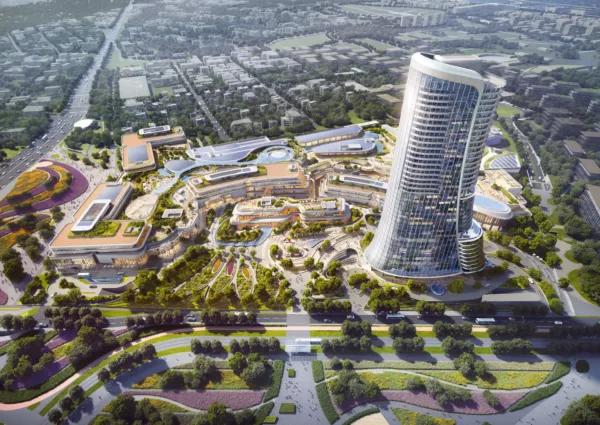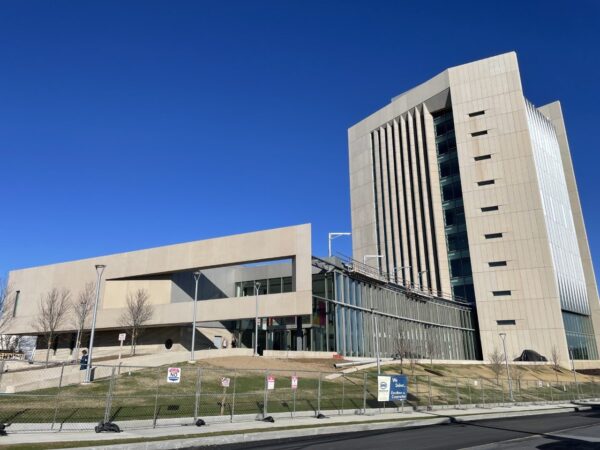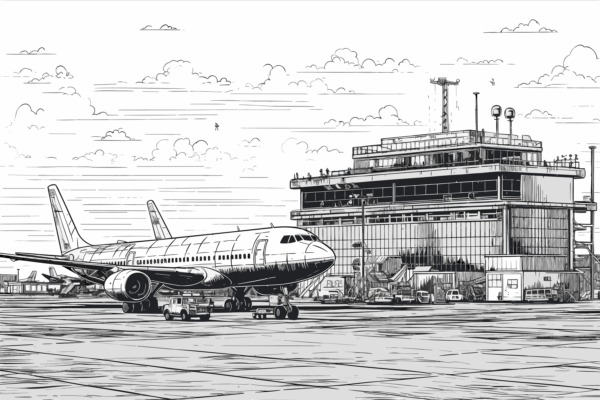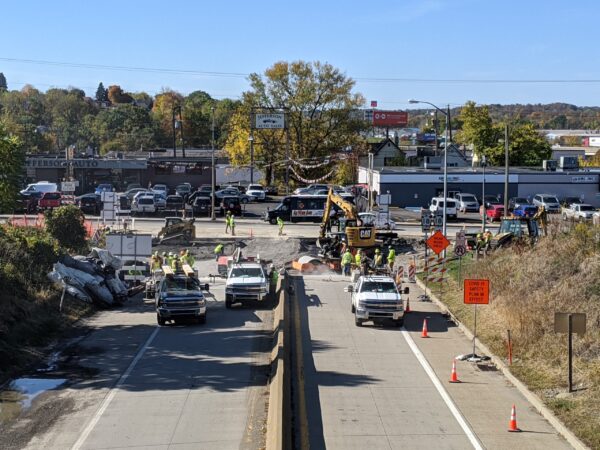

They say that two things in life are certain: taxes and death. Let’s add traffic to that list.
Almost every commuter, no matter what region of the U.S. they travel in, can attest to the certainty of traffic during the weekday rush hour commute and the headaches that accompany it. All the car honking, rude gesticulating, and angry grumbling can be compounded by limited lane use.
Until 2012, California’s Santa Clara County residents knew such frustrations. Before 2012, drivers only had access to regular lane usage, which caused cars to get backed up on highways, especially during rush hour. But in March of 2012, the Santa Clara Valley Transportation Authority’s (VTA) Silicon Valley Express Lanes Program began operating the county’s first express lanes, located on the State Route (SR) 237 and Interstate-880 corridor.
Express lanes are free for carpoolers and motorcyclists and available to single occupant vehicles for a toll paid through a transponder. These lanes have multiple benefits: they’re a more efficient use of existing roadways, they help improve travel times, and they provide a new source of revenue for road improvements. Since SR 237’s express lanes first phase opened more than 7 years ago, commuters’ travel times have improved by an average of 7 to 20 minutes—and that was just Phase 1.
Hill International, a global leader in managing construction risk, is providing project management support to the VTA for its Valley Transportation Plan 2040, a countywide long-range transportation plan. Funded through Measure B, a half-cent sales-tax measure aimed at funding $6.5 billion in transportation capital projects over the next 30 years, projects for the program include bicycle/pedestrian passages, Caltrain grade separations, improvements to the state route 58 corridor, county expressways, and highway interchanges, including express lanes and toll roads for SR 237.
Phase 1 of the SR 237 Express Lanes Project ended in 2012, and construction for Phase 2 began in January 2018. Hill provided construction management services for this second phase, which is an extension of the SR 237/I-880 Express Connectors Phase 1 Project and the second out of nine total phases. Hill’s services included planning, program controls, conceptual design and studies, environmental analysis, final engineering, construction, activation, project closeout, and operations for the project, which converted the remaining high occupancy vehicle (HOV) lanes on SR 237 (up to Mathilda Avenue in Sunnyvale) to express lanes.
According to the VTA, the second phase project retains “the open access configuration with existing HOV lanes,” which means “that carpools and other HOV-eligible vehicles, along with toll-paying single occupant vehicles (SOVs)” are able “to enter the express lanes…[by] crossing over a dashed lane line.” In addition, “carpools with two or more occupants, motorcycles, transit buses and eligible clean-air vehicles with applicable decals will be able to continue to use the express lanes free of charge.”
The project has been a success for both the VTA and Hill, whose team found that coordination was key to seeing the project through to completion.
“Coordination was, at first, a challenge,” says Hill’s Ray Balallo, senior construction manager for the project. “We had so many stakeholders involved— VTA, California Department of Transportation (Caltrans), City of San Jose, City of Sunnyvale, and all the other stakeholders. But some of us in our team who were working on the project came from Caltrans—the oversight agency for the project—including Masood Batmanghelich, our assistant resident engineer; Reza Shokrpour, our electrical inspector; Peter Perez, our office engineer; and myself. With our combined broad range of experience in construction management and contract administration on many State highway transportation projects of all sizes and types, the project was successfully completed on time and within budget. Also, each of us has successfully worked in key roles and demonstrated successful partnership between Caltrans and various local agencies. When Hill proposed us to work with the VTA on this project, the VTA liked the fact that we had all the required experiences. Caltrans experience made a big difference.”
Dedication and diligent spirit also added to the project’s success. “Employees like Youssef Saliba, the inspector who oversaw the civil portion of the project, and Amir Yazdanbakhsh, another inspector who joined us three months ago, both helped to keep these projects on schedule,” says Balallo. “About 80% of the construction for this project was done at nights, and Youssef and Amir handled all the night work. Also, kudos to Andrea Lewis, our office administrator for our well-organized and complete construction project records. Without that kind of commitment to this project, chances are it would have faced much harsher obstacles.”
Phase 2 of the project is now completed thanks to the teams involved. The VTA hopes the project will help improve the flow of traffic and bring in much-needed revenue through toll use. This money will help fund highway facility maintenance, transit improvements, and enforcement by the California Highway Patrol. On November 15th, the additional express lanes were opened for service, and on December 3rd, the VTA celebrated their achievements with a Grand Opening ceremony.
And that’s not all. Construction for Phase 3 is nine months in and set to be completed in 2021, and the VTA is currently working on the design for Phase 4. When all nine phases are completed, Santa Clara County drivers will have access to approximately 210 lane-miles of express lanes, a true headache reliever for their drive home.
Share

April 11, 2024 | Articles
A Model Move: Managing Move-In at the Sylvia H. Rambo U.S. Courthouse

April 8, 2024 | Articles

April 4, 2024 | Articles
Driving Growth and Seizing Opportunity: Lukasz Marcinkiewicz Joins Hill as Country Manager, Poland

April 1, 2024 | Articles

March 27, 2024 | Articles
Building the Future: Women’s Leadership and Community Engagement in the Construction Industry

March 25, 2024 | Articles
Leveraging Data Analytics and Dashboards for Enhanced Project Performance

February 26, 2024 | Articles
Continuity, Creativity, and Collaboration: Delivering PennDOT’s Route 18 Signal Upgrade
We and use cookies and other tracking technologies to improve your experience on our website. We may store and/or access information on a device and process personal data, such as your IP address and browsing data, for personalised advertising and content, advertising and content measurement, audience research and services development. Additionally, we may utilize precise geolocation data and identification through device scanning.
Please note that your consent will be valid across all our subdomains. You can change or withdraw your consent at any time by clicking the “Consent Preferences” button at the bottom of your screen. We respect your choices and are committed to providing you with a transparent and secure browsing experience.
| Cookie | Duration | Description |
|---|---|---|
| cookielawinfo-checbox-analytics | 11 months | This cookie is set by GDPR Cookie Consent plugin. The cookie is used to store the user consent for the cookies in the category "Analytics". |
| cookielawinfo-checbox-functional | 11 months | The cookie is set by GDPR cookie consent to record the user consent for the cookies in the category "Functional". |
| cookielawinfo-checbox-others | 11 months | This cookie is set by GDPR Cookie Consent plugin. The cookie is used to store the user consent for the cookies in the category "Other. |
| cookielawinfo-checkbox-necessary | 11 months | This cookie is set by GDPR Cookie Consent plugin. The cookies is used to store the user consent for the cookies in the category "Necessary". |
| cookielawinfo-checkbox-performance | 11 months | This cookie is set by GDPR Cookie Consent plugin. The cookie is used to store the user consent for the cookies in the category "Performance". |
| viewed_cookie_policy | 11 months | The cookie is set by the GDPR Cookie Consent plugin and is used to store whether or not user has consented to the use of cookies. It does not store any personal data. |


